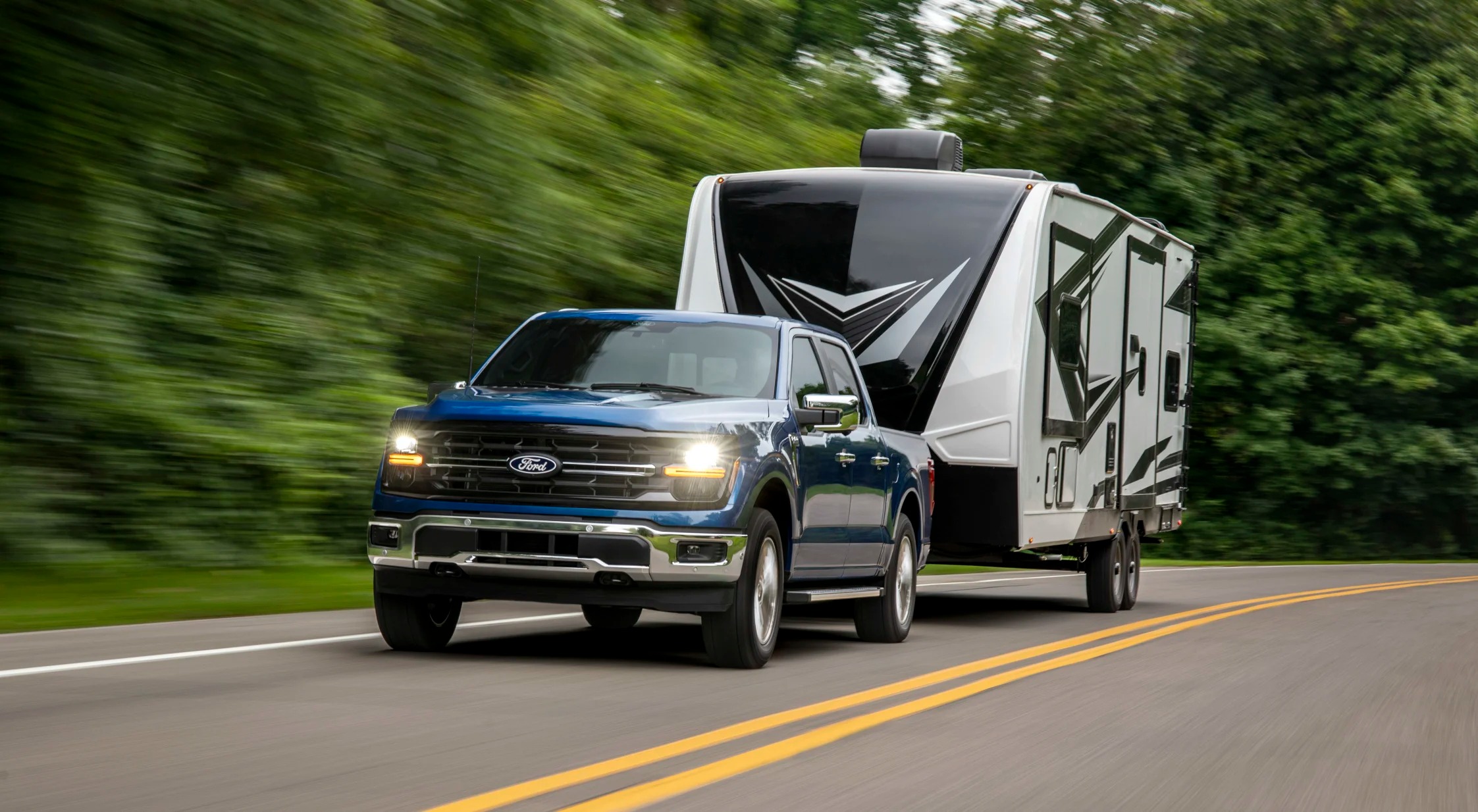“Built to last” and “built Ford tough” are apt mottos to describe Ford’s cars and trucks, and in particular, its popular Ford F-150 pickup. The truck, released in 1975, was a runaway hit from the moment it first rolled off the assembly line, and it’s been a consumer favorite ever since.
The Ford F-150 pickup has all the necessary bells and whistles to make driving, towing and transporting cargo easy and pleasurable, but it has had its share of formidable rivals over the decades — one such opponent is the Toyota Tundra. Let’s take a deep dive into the similarities and differences between the F-150 and the Tundra so you can make a more informed decision when it comes time to sign on the dotted line.
KEY TAKEAWAYS
- For 2024, Ford has made some significant changes to the F-150's design, inside and out. By comparison, the Toyota Tundra has made only minor changes since its last major redesign in 2022.
- Ford's 3.3-liter V6 is now officially a thing of the past — this year’s model has considerably more horsepower and torque, thanks to the new turbocharged 2.7-liter V6. Its towing and payload capacity is greater than the Tundra’s but still a little less than that of the 2023 F-150.
- The price point for Ford and Toyota's standard trim models is about the same.
New Features: The Ford F-150

The biggest change to the Ford F-150 is in its powertrain lineup. The 3.3-liter V6 is no longer part of the equation — the truck’s base engine is now a turbocharged 2.7-liter V6, which adds 12 percent more horsepower and 50 percent more torque than the previous year's model.
Aside from this major change, the F-150's other trim levels still offer a variety of engine configurations and options, such as the combo twin-turbo 3.5-liter V-6 with an electric motor, the 3.5-liter Ecoboost, and the 5-liter V8.
Changes abound inside the cab as well. Here, the F-150’s new features include a 12-inch infotainment screen with Apple CarPlay and Android Auto and SYNC 4 infotainment software. The truck also features SVS (Stolen Vehicle Services) and BlueCruise updates. All trim levels now include standard LED lighting, and the truck's Pro Access feature allows the tailgate to open in two directions, making it a breeze to load and unload cargo.
The last major redesign for the Toyota Tundra was in 2022, so there are no real significant changes to it for 2024, as the automaker has set its sights on the Tacoma midsize truck.
Towing Power: The Ford F-150
The Tundra can tow up to 12,000 pounds and carry a payload of up to 1,940 pounds, depending on the chosen trim. These figures do not match those of its primary competitors, particularly the Ford F-150, which is the standout in terms of its towing and hauling capabilities.
The F-150 can easily haul loads of up to 13,500 pounds and has a payload capacity of up to 2,455 pounds. While its bed may not be overly large, you’ll have no problem handling most major tasks. While its maximum payload and towing capacities have slightly decreased in comparison to those of last year’s, Ford still claims best-in-class figures.
A Comfortable Ride: The Toyota Tundra
The 2024 Toyota Tundra shows significant advances in interiors from its former iterations, with improvements in seating and noise levels. Its simple climate control system operates on a "set it and forget it" basis; however, while it has large buttons and dials, some of its labeling can be hard to read in bright light. Whether you're in the driver's seat or a passenger along for the ride, the Tundra provides a relatively stable and smooth journey for all.
Depending on the options you choose in the F-150, its front seats may feature heating, ventilation, three-level lumbar adjustment, or massage functions. Ford-Patented Max Recline seats offer flat surfaces if you need a little shut eye, but they do lack the overall comfort and side bolstering that standard seats provide.
However, the pickup's easy-to-use adjustments for seats, the steering wheel, and pedals ensure that any driver can find a comfortable position in the vehicle, and the truck's climate control system requires little adjustment to reach a desired temperature.
The truck manages road, tire, and wind noise well and its engine is not overly loud. However, the PowerBoost hybrid is known to have more noticeable noise and vibration.
The F-150’s array of interior controls may seem overwhelming to a new owner, but they are user-friendly and instinctive. Even in gloves, they are easily adjustable. The crew cab's spaciousness allows ample room for everyone. Large windows and a contoured front door section improve visibility and sightlines, particularly around the truck’s side mirrors.
The Toyota Tundra's interior controls are also user-friendly, with gauges and graphics that are simple to adjust. It, too, provides ample space for occupants, and its elevated driving position makes its handling that much more manageable. Its full-width power rear window gives it a spacious feel. The truck has a massive hood, and while forward visibility is generally good, there may be obstructed views due to its thick windshield pillars.
Ford F-150 and Toyota Tundra Price Comparisons
Ford has bumped the starting MSRP for the 2024 F-150 lineup from the previous year from $41,530 to $43,510, and its Platinum Plus trim can set you back over $77,980. The Toyota’s base model is a little less expensive, with a starting MSRP of $42,015, but its Capstone package exceeds the price of Ford’s top F-150, at $80,695.
The Best Full Size Truck For You
In conclusion, while the 2024 Toyota Tundra has a lot going for it, the 2024 Ford F-150 steals the show. This redesigned full size truck checks all the boxes in power, cargo capacity and spaciousness. If you want to see the Ford-150 in action visit us at Lunghamer Ford today!